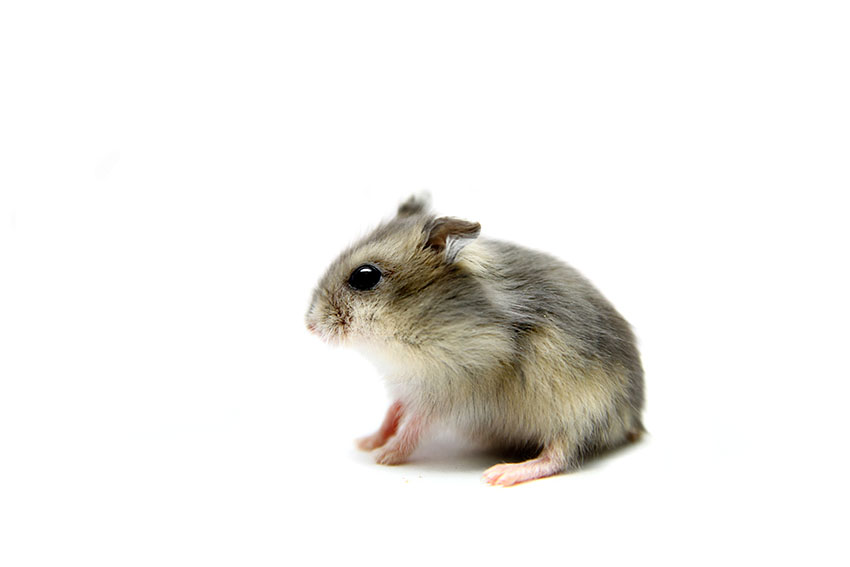It’s good practice to keep an eye on your hamster on a day-to-day basis, looking for any unusual behavior or obvious discomfort, loose droppings, or other visible health problems. You should also give your hamster a two-minute health check every week.
Here are some of the steps to use to help check that your pet is in good shape.
- Checking your hamster’s hair
Is your hamster’s hair in good condition? Are there any thinning or bald patches? Does he scratch more than usual? Is there any black or dark-coloured material in his hair? Any of these symptoms could mean your hamster is suffering from an injury, infection or parasite.

The condition of your hamster's hair can indicate a number of different health issues
- Checking your hamster’s skin and nose
Are there any cuts or scrapes on the hamster’s skin? Does he have patches of any dry skin, or crusty areas? Are there any lumps, or red or swollen areas? Examining your hamster’s skin can tell you if he’s having problems with the following common conditions: parasites, itchy dry skin, or bar rub. He could also have a tumour or infection.
- Checking your hamster’s eyes
Do the hamster’s eyes open properly? Are they protruding further from the head than usual? Is there any crusting or discharge? Is there anything actually in the eye, acting as an irritant? Are there gray areas in the eye? That indicates cataracts. Are the eyes watery or weeping? That suggests an eye infection.

Healthy hamster eyes should be clear and bright
- Checking your hamster’s bottom
A hamster’s rear-end can tell you a lot about his health! If anything is adhering to it - discharge, blood, faecal matter, or moisture – that indicates a health problem. It could be an upset stomach, or something more serious such as an infected womb, urinary problems, bowel problems, or a condition known as wet tail (aka proliferative ileitis).
Hamsters, particularly Syrian hamsters, can be affected by the latter problem. Wet tail is a particularly painful condition, brought on by stress, and it can be fatal. Check your pets regularly for signs of this condition, and take the hamster to the vet as quickly as possible if you spot any of the symptoms. These include diarrhoea, an awkward posture, and loss of weight. Hamsters suffering wet tail can die within 48 hours, so time is of the essence.
- Checking your hamster’s teeth
A hamster’s incisors – the front teeth – should be of relatively even length. If not, they may need treatment. Do the teeth show any signs of chipping or bleeding? Does the area around the hamster’s mouth bleed or show any signs of having bled recently? Some of the most common dental problems involve tooth breakages and overgrown teeth. If you think your hamster has a problem with its teeth, consult the vet. Serious dental problems can prevent a hamster from eating, which very quickly becomes life-threatening.

A hamster's teeth are central to his health
- Checking your hamster’s ears
Are the hamster’s ears free of dry flaky skin? Is there a lot of dark wax inside? Their ears can suffer from dry skin and ear mite infestation, so always keep an eye on them.
- Checking your hamster’s claws or toe nails
Are the hamster’s nails a good length? If they become overgrown, they may start growing back towards your pet’s foot, causing pain and discomfort. The vet will trim the nails for you.
Comments
There are no comments just yet